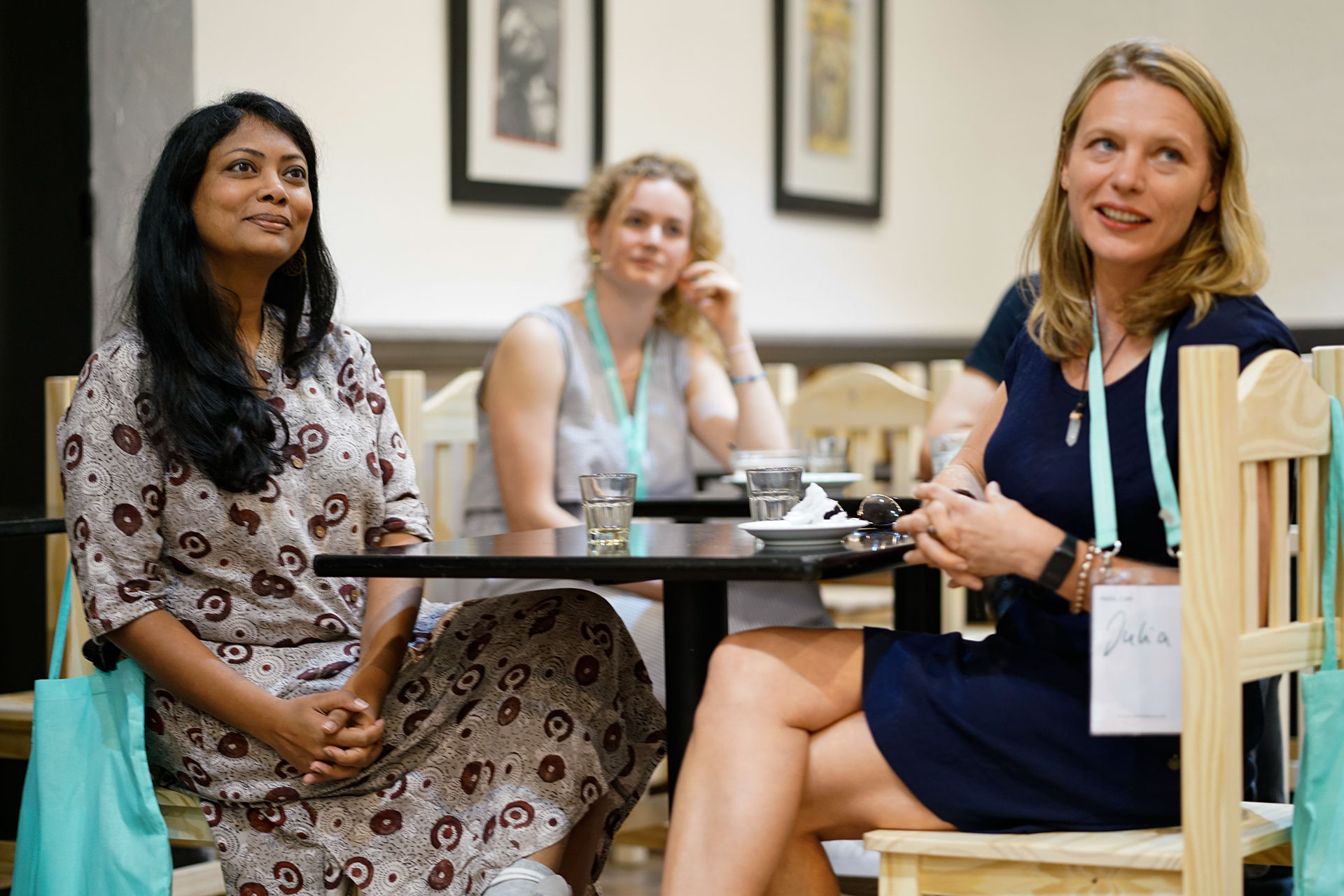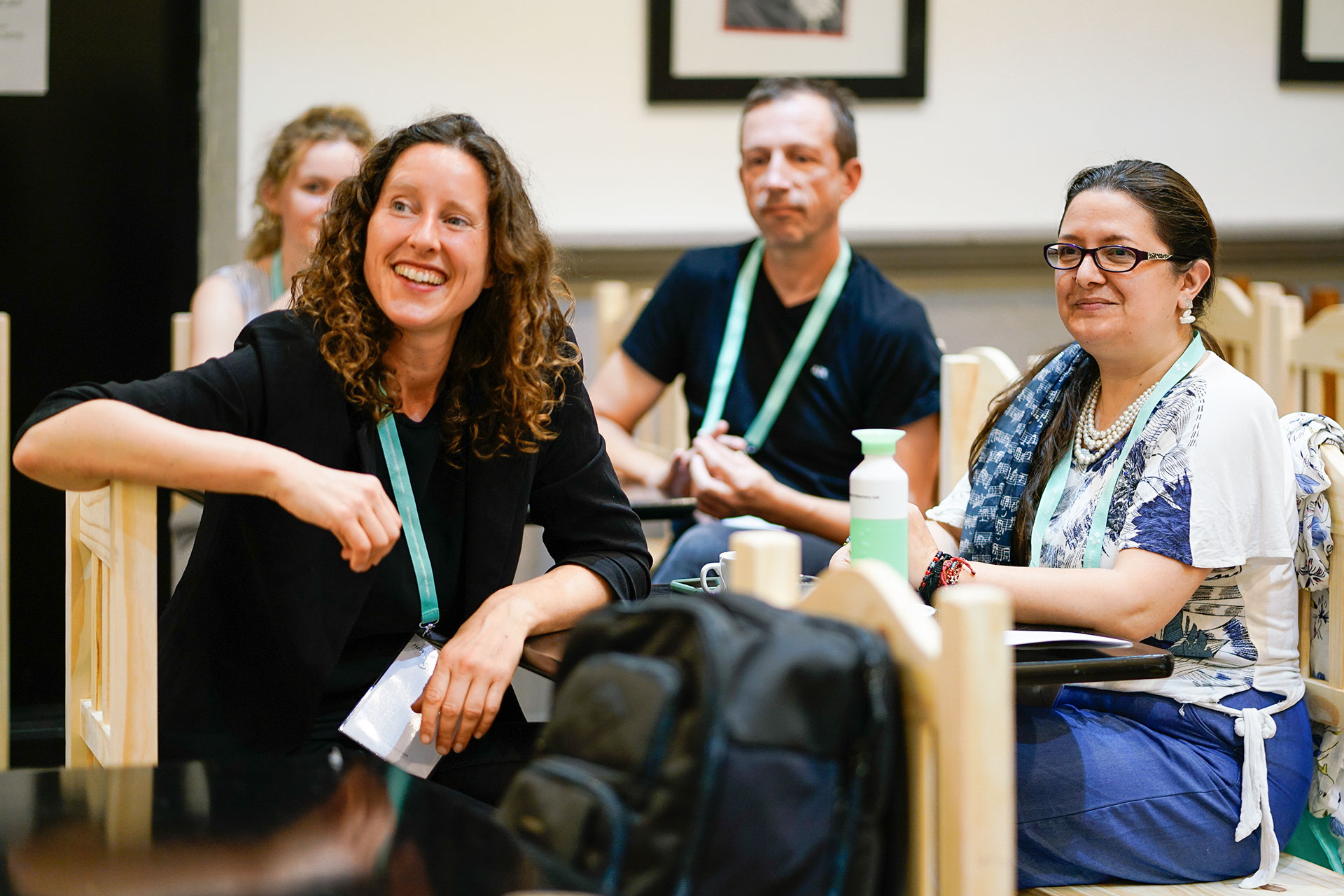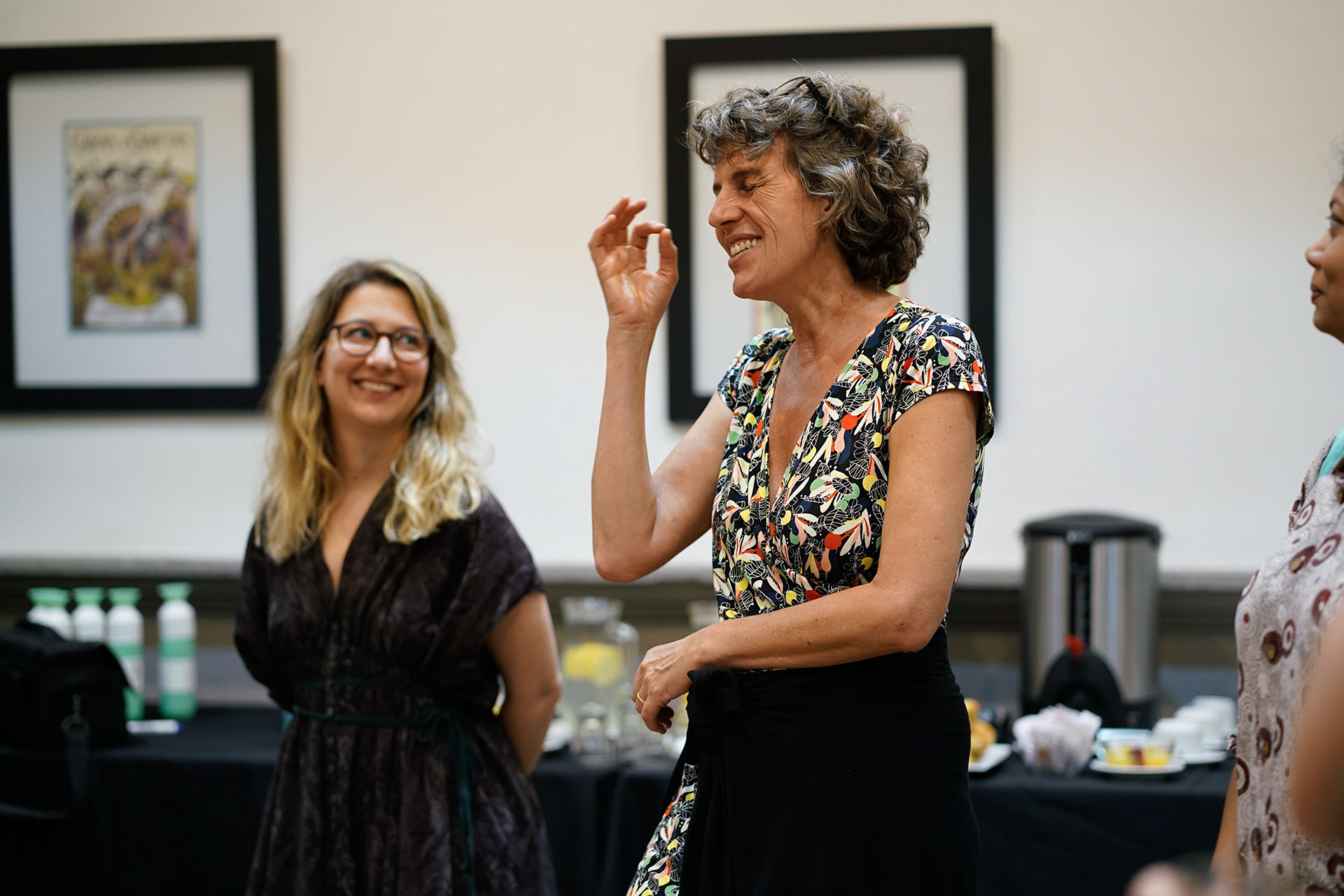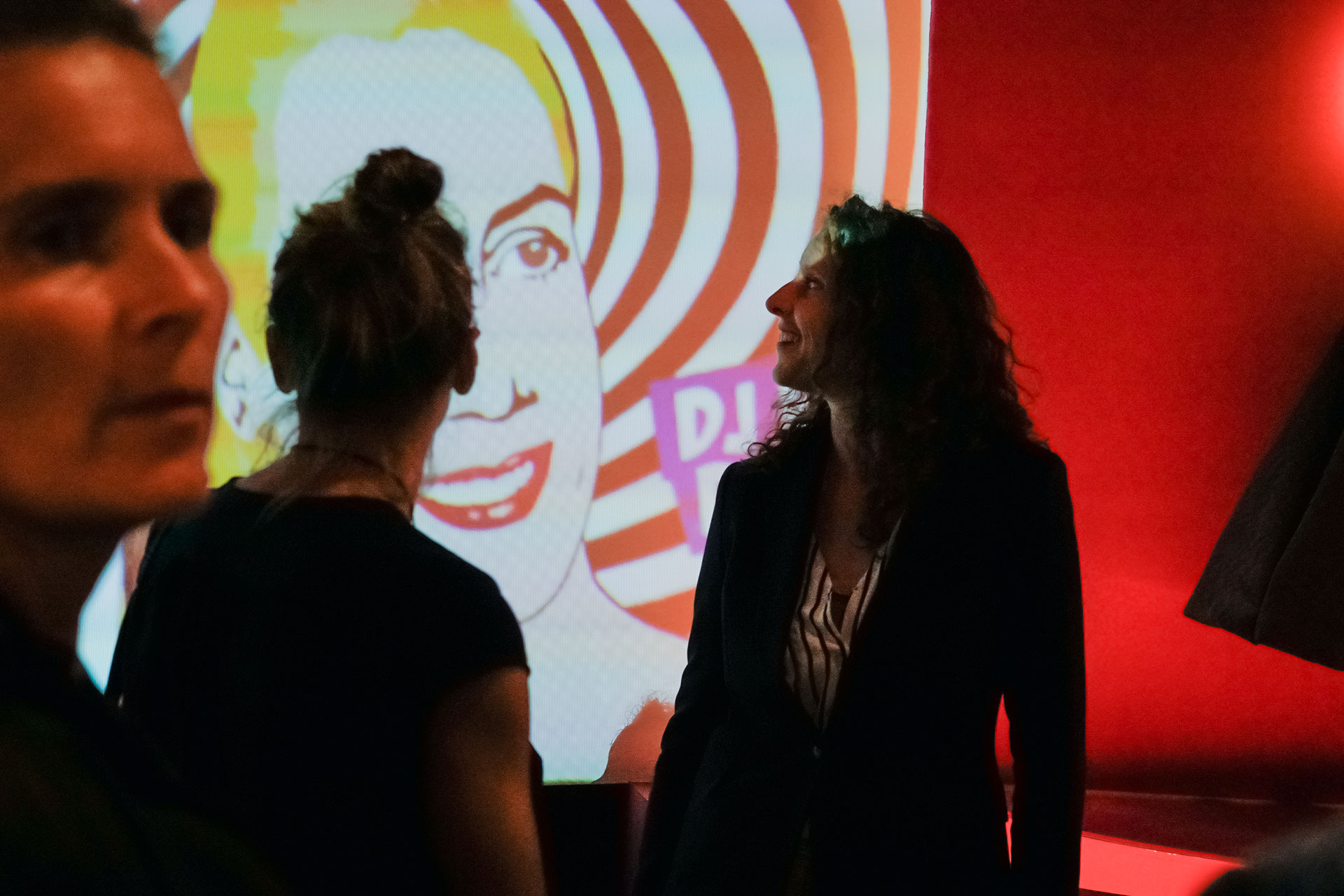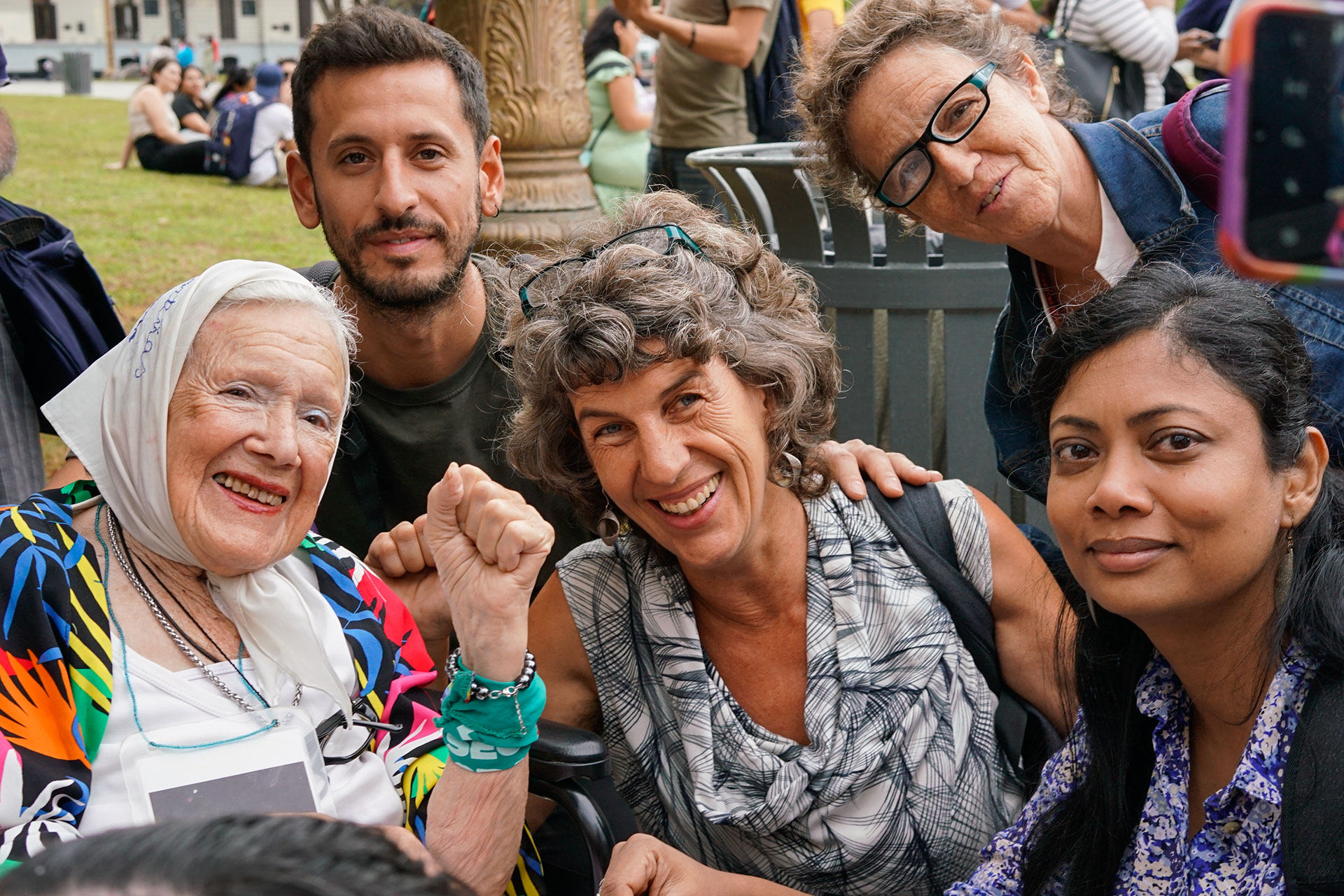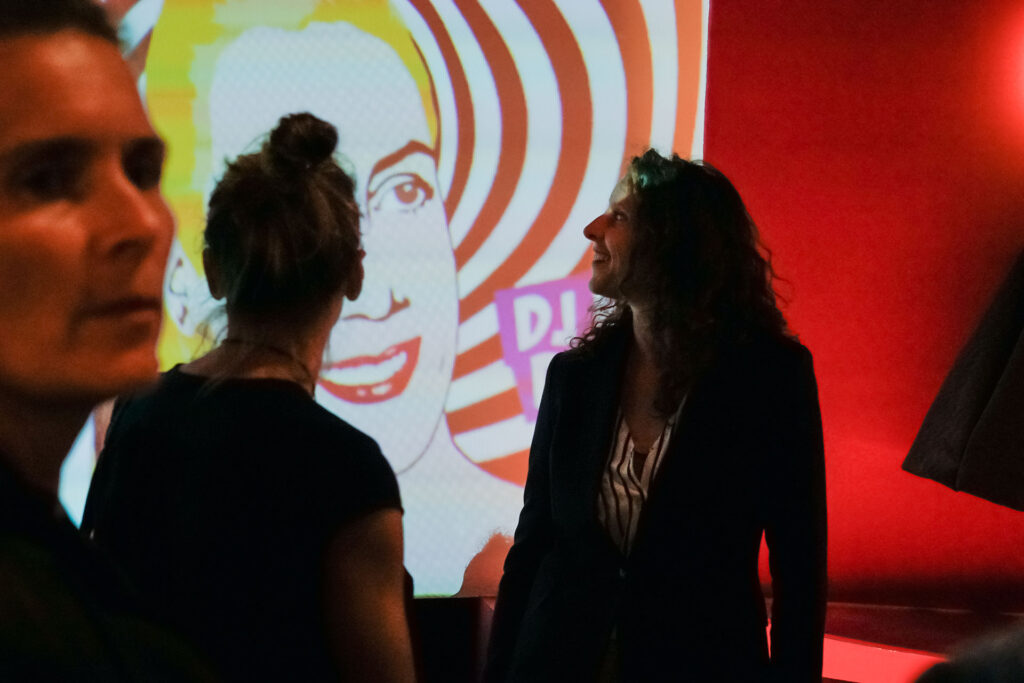Blog
Respecting and Disrupting Heritage – A Soft Diplomacy Approach
by Dagmar Hovestädt & Dr. Banu Pekol
In December 1970 the German Chancellor Willy Brandt visited Poland for the first time. Since 1945, with the end of Nazi occupation of Poland, no diplomatic relations had been established between both countries. But Willy Brandt, who fled Germany in 1933 for Norwegian exile, made improving relations with Eastern Europe a foreign policy priority. His visit was on the occasion of the signing of the Warsaw Treaty that would regulate the relations between both countries. The protocol suggested highly symbolic visits to two monuments: the tomb of the unknown soldier and the monument commemorating the 1943 uprising in the Warsaw Ghetto. When visiting the latter, the German Chancellor wordlessly fell to his knees. An unforeseen reaction, spontaneous, heartfelt, saddened with the impossibility of representing a nation in whose name the Holocaust was committed.
This “Warsaw knee fall” became a historic moment, itself later memorialized with a plaque at the scene. A human gesture of compassion, humility, a diplomatic act outside of any protocol that changed the perception of a nation and its own relationship with the Nazi crimes. A simple symbol, the “knee fall” is an interaction with history, with heritage and memory that shows respect and dignity where words fail. The power of heritage and history and the power to change the relations between peoples by such interaction couldn’t be better illustrated. But what is heritage? And how can we continue harnessing its power for better understanding among people and nations?
Heritage as Concept
The Convention concerning the Protection of the World Cultural and Natural Heritage, adopted by UNESCO in 1972, considers monuments, groups of buildings and sites as heritage. It awards them the title World Heritage Site only if the site has “outstanding universal value” from the point of view of history, art, science, aesthetics, ethnology or anthropology. The World Heritage convention, with 195 countries who have signed it, aims to safeguard heritage in this universal way.
In general, definitions of heritage tend to frame it as an inheritance, a source of identity, as an assemblage of values and discourses, or more broadly as a mediator between the past and present, human and non-human. Yet heritage is also an arena of governance, of institutions, and a space of both cooperation and contestation, weaved in networks of capital and institutionalized practices of governance. With this dynamic in mind, this article approaches heritage as plural and multi-faceted. It shifts the focus from the conditions that created it, to understanding heritage as a challenge that can both bring people together, as well as set them apart, and something that is in flux and has a propensity to change. Especially the contested heritage and the post-conflict heritage are of interest from the perspective of politics and diplomacy.
Individuals look to cultural forms and construct a memory of the past.
Historical imagination can be strongly influenced by memory. Traces, for example in heritage buildings, relate both to residual matter and to memory. The nature of memory is a socially framed property of individual minds. Collective memory is, in Schudson’s words, the ‘image of the past held by individuals who did not themselves experience it but learned of it through cultural artefacts’. Individuals look to cultural forms and construct a memory of the past.
Reconstructions of the past are always first constructed in the present context. And this is where lies the power of heritage for diplomacy and local intervention. Even if memories exist in individual minds, they are social and cultural in nature. In this framework, cultural heritage acts as a cue. Once these cues are activated, they become a part of social activity, inseparable from social and historical routines. Physical interventions to cultural heritage—such as reusing it for a new purpose—embodies selection, interpretation and distortion. So, distortion in memory is not a direct distortion in the individual or social memory but—in this context—a distortion to the fabric of the building which then acts as a catalyst for distortion in collective memory.
Just as memory selects and distorts in the service of present interests, the same is done with interventions in contested and post-conflict heritage. The past recedes, and the new interpretation does not operate independently from memory; it is a willful decision which affects the unconscious of social memory. Since people remember collectively, publicly and interactively and their interaction is not only with people but also with cultural heritage, when faced with no original physical remainder to contest their memory, people will accept the existing “truth”.
The Global Diplomacy Lab’s Approach
Looking at the world today and at the history of conflicts, it seems that at their core there is often an abuse of heritage, the construction of “truths” about the past without respect for physical and other remains resulting in a willful distortion for political gains. Heritage is also used as a discourse of belonging vs. othering, of one culture vs. the other, then extrapolated to the need to destroy “the other”. The Global Diplomacy Lab in its quest to find ways to a more inclusive and more diverse diplomacy has examined heritage as a field of diplomacy in need of change. While the UNESCO-approved world heritage sites—cultural and natural icons and intangible heritage—often create an easy connection within nations and among nations, it is the conflicted heritage that poses a larger challenge, a challenge which also UNESCO in its cultural site designation tackles.
Seeking to understand how societies negotiate a darker heritage for a more connected nation, what tools can emerge for diplomacy and how international cohesion can be generated from this process, two GDL Labs in Argentina (in 2017 and 2022) developed a number of insights, and tools.
Historical Background: Argentina’s last brutal civil-military dictatorship from 1976 to 1983 continues to have an impact on society to this day. At that time up to 30,000 people [the number is a matter of debate to this day, depending on where you stand in history, but impossible to verify due to the nature of crimes.] were abducted, tortured to death, executed, or disappeared without a trace, sometimes dropped from military planes into the ocean. How to deal with this dark period became a long struggle in the ensuing democracy, not to last because the military leaders and officers responsible for these atrocious crimes continued their tasks widely unpunished.
While engaging with official memory events is an established and often too ritualized affair, a dialogue with civil society initiatives and actors is not regularly part of the diplomatic arsenal.
During the 2022 Lab, the GDL group found a civil society active in the memory space. Many movements grew directly out of resistance to the military dictatorship. In the capital Buenos Aires several sites commemorate the victims and memorialize the period of dictatorship as a repressive period in the nation’s history. A military compound, ESMA, a former military school, now houses a museum, an archive, a forensics unit for finding traces of the disappeared and several educational and civil society groups. A large memory park with long walls naming all those that disappeared is right at the seaside where the planes took off. Among the civil society impressively groups vocal in the memory space are the mothers and grandmothers of those disappeared, still gathering weekly at the Plaza de Mayo, groups of children of military officers confronting the silence of their parents and regional memory initiatives memorializing the traces of the dictatorship in smaller towns where the brutal repression happened in equal measure.
For diplomats, encountering this heritage requires sensitivity, listening and good preparation. While engaging with official memory events is an established and often too ritualized affair, a dialogue with civil society initiatives and actors is not regularly part of the diplomatic arsenal. It is often in this space, however, that a substantial part of a country’s organic as well as dark heritage is kept alive. It is here where diplomats need more training to incorporate this resource better.
Interacting with another country’s memory, culture and heritage can be a powerful signal, even when the current government ignores it. When French President François Holland during his state visit in 2016 met with the mothers and grandmothers of the Plaza de Mayo and put the visit to the ESMA site on his agenda, he in essence forced then President Mauricio Macri to visit the group and the site for the first time. It validated the memory culture and its civil society actors. However, just as heritage is in flux, so is memory culture. With a new government in late 2023, the vibrant civil society activities are now under financial pressure by the Milei government. Additionally, members of the government through words and action deny, justify, or defend the military’s action during the dictatorship. The ESMA site, since 2023 part of the World Heritage list precisely for its heritage of repression, in the spring of 2024 became the site of an honor ceremony for veterans of militaries in retirement, with the expressed support of the ministry of defense and on the day that commemorates the beginning of the military coup of 1976. A setback for those who fought for a different way of dealing with this heritage. It is thus in this constant dialogue around a heritage site that the ideas of the past, present and future of a nation and all other nations are negotiated. It is in this dialogue where diplomacy can be effective.
Looking Ahead: Changing Nature of Relationship to Heritage and the Idea of a Charter
Contested cultural heritage can easily become a battlefield for alternative realities, as well as a potential catalyst for collaboration and peacebuilding. Unlike Greek philosophers, this article does not put the golden age at the beginning of the world, but argues that through cultural heritage it is perfectly possible for the past to find a much richer expression in the present, through facilitating dialogues that would otherwise be too risky to have. For that it is necessary to acknowledge that not only does the present have a claim upon the past, but that the past has one on the present, too.
The goal of these efforts should not be to eliminate conflicts, Conflicts are simply the unheard, unacknowledged, unaddressed voice of what isn’t working and needs correcting, or what is ready to evolve and is struggling to free itself from what is no longer useful. Instead, as Kenneth Cloke said, the goal should be to turn the anger and resentment that fuel our repetitive disputes in the direction of creative problem solving, collaborative negotiation, forgiveness, reconciliation, and a continuing, proactive commitment to improving our communications and relationships.
On the way to establish a Charter, the GDL envisions a collaborative, open design process that can strengthen the capacity of civil society AND diplomacy, and could advance diplomacy, making “the table bigger”.
Heritage in diplomacy then can be understood as having strategic importance, as part of countries’ self-presentation. In that sense, heritage is the common or universal language of the shared heritage. In the annual UNESCO meetings, interventions are increasingly oriented around heritage as the bridge between nations. Connections from the past are signaled as the basis for future cooperation. Terms such as flows, crossroads, cultural links, bridges, and histories of pilgrimage are liberally used to justify inscription on the World Heritage List.
Within the discussion of Japan’s nomination of the Tomioka Silk Mills and Related Sites, for example, the Turkish ambassador skillfully connected Turkey’s own history of silk production to multiple sites and cultural traditions across Asia and Europe in order to propose future modes of cooperation. This illustrates how countries have become increasingly adept at articulating the diplomatic value of their own culture, both in the past and the present. Heritage as diplomacy comes into play when such cultural forms come to be directly or indirectly involved in foreign policy.
As a result of its interaction with heritage in diplomacy, the Lab in Argentina developed the idea to establish a “Charter on Memory” to foster engagement of diplomats, civil society, official memory actors and other stakeholders with memory processes and activities. The goal of such a charter would be to enable inclusive reflection on memory and heritage processes, to enlarge the diplomatic toolkit with solution-finding and connectedness, and to protect it from political instrumentalization. The form of a “Charter”, internationally signed by as many states as possible, could give it the necessary weight to accept compliance with it. On the way to such a charter the GDL envisions a collaborative, open design process that can strengthen the capacity of civil society AND diplomacy, and could advance diplomacy, making “the table bigger”.
A fundamental baseline for such Charter would be:
- If you (ab)use the past to support
your present hold on power, open
dialogue about it is not possible,
leading to complications in its diplomatic
use. - If you use the past to illuminate the
present, open and diverse dialogue
is possible and leads to a better understanding
of contemporary issues.
In addition to being appropriated for nation-building in ever more subtle and far-reaching ways, cultural heritage is also increasingly incorporated into various areas of international discourse. Heritage diplomacy brings into focus tensions and contradictions. The desire to preserve and curate material culture has both brought nations together and simultaneously kept them apart. We need to better understand the complex forces and the political logic related to heritage, given that in this field cooperation and contestation coexist as two sides of the same coin.
Authors: Dagmar Hovestädt, Dr. Banu Pekol
This article was first published in the Bled Strategic Times 2024. The Memory in Presence Lab in Argentina took place in 2022. You can read about it in this blog post and download the Lab report here.
Images from the Memory in Presence Lab, Argentina 2022
